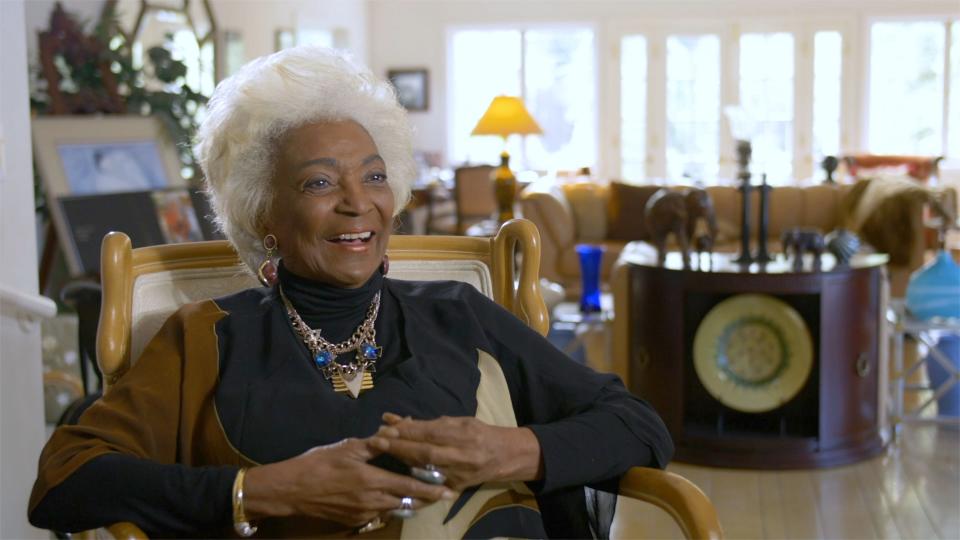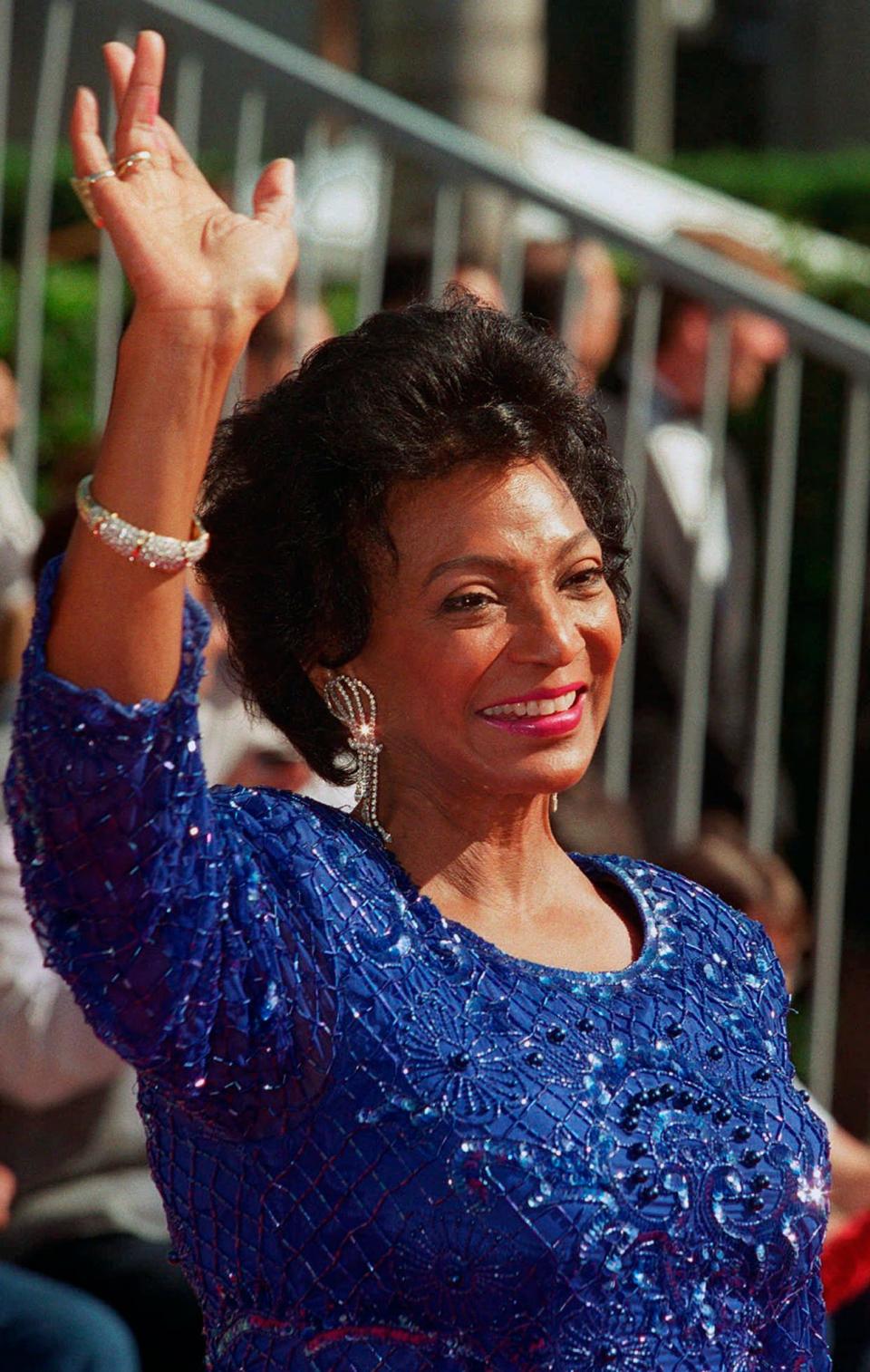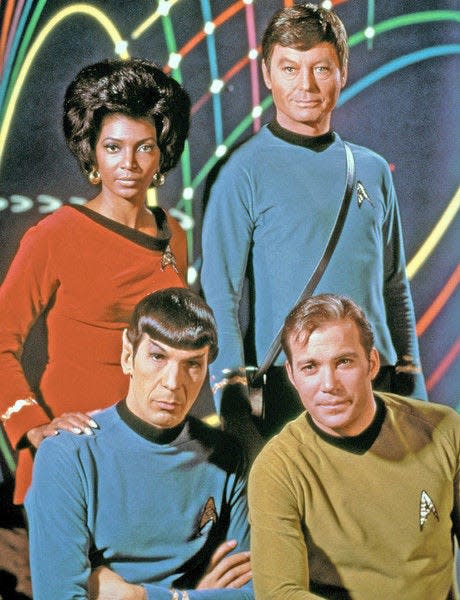Final frontier: Nichelle Nichols kept deep connections with NASA, Space Coast after her role on 'Star Trek'
Most knew Nichelle Nichols for her iconic role as the chief communications officer aboard the USS Enterprise on TV's "Star Trek," but she also played a crucial part in recruiting women and minorities for the nation's real space program.
Nichols, who played Lt. Nyota Uhura in the beloved space series set in the 23rd century and who early on in her career sang on stage, died Saturday. She was 89.
“Her work was really fantastic. She actually helped to recruit the first group of women and minorities in the late '70s," astronaut Joan Higginbotham, the third Black woman to fly into space, told Florida Today.
"I met her a few times. She was a beautiful person inside and out,” Higginbotham said.

Tributes poured in across social media after Nichols' family announced her death Sunday.
“We celebrate the life of Nichelle Nichols, Star Trek actor, trailblazer, and role model, who symbolized to so many what was possible,” NASA said in a tweet. “She partnered with us to recruit some of the first women and minority astronauts, and inspired generations to reach for the stars.”
More coverage: 'Woman in Motion' film about Nichelle Nichols, Star Trek and NASA screens one night only
Obituary: Nichelle Nichols, 'Star Trek' icon who played Lieutenant Uhura, dies at 89
Nichols was thrust into international stardom after "Star Trek," which featured a diverse cast and an inclusive outlook. The original show lasted just three seasons on television in the late 1960s, but it grew in popularity with syndication rebroadcasts in the 1970s.
"Our space program is our future. We haven’t even begun to begin," Nichols once told an interviewer.
In 1977, four years after the last Apollo moon mission, Nichols challenged NASA to recruit more women and minorities to break through the final frontier of the space program; a white, male astronaut corps.
In the mid-70s, interest in the "Star Trek" phenomenon reached NASA. As the space shuttle jumped from design pages and engineering schematics into actuality, NASA administrators reached out to the cast of the pioneering show. The first shuttle — a prototype — was named after the show’s majestic ship, the USS Enterprise, and was rolled out from the Rockwell plant in Palmdale, Calif., with Nichols and other castmates looking on.

The space agency determined at that time that the future of space travel needed more participation from minorities and women. The agency worked with Nichols’ company, Women in Motion Inc., in 1977 to carry out recruiting efforts. She was given a six-month contract, NASA documents show.
Nichols visited the Kennedy Space Center numerous times, taking in launches and meeting with recruits. During the late 1970s, she talked about her mission on network television, appearing in commercials and working to dispel myths and suspicions about space travel and minority recruitment.
Nearly 8,000 applications from women and minorities came into the space center. Among some of the early recruits were Sally Ride, the first American woman to go into space, and Guion Bluford, the nation’s first Black astronaut.
Higginbotham got into the astronaut corps in the mid-1990s, but by then Nichols' efforts, coupled with NASA’s determination, had made deep inroads into changing the face of space flight.
“Her efforts had already gone forth. That barrier was broken," Higginbotham said. "She was an absolute trailblazer."
At one point, Nichols recalled planning to end her role as Lt. Uhura — a variation of "uhuru," the Swahili word for "freedom" — shortly after the show began filming in 1966. Then Nichols met with Martin Luther King Jr., who was a fan of the show in part because it depicted a diverse societal utopia that he had outlined in his "I Have a Dream" address in 1963.

In an interview with USA Today, Nichols said King listened to her tell about her frustration playing the part and her wish to leave the show. King would have none of it.
"You don't understand the effect that you are having, not only on Black people, not only on young women, but on everybody," King told her. "Everybody's mind and attitude is changed immeasurably simply because you are there."
She continued to play Uhura up until the show's cancellation. Decades later, astronaut Mae Jamieson, the first Black woman to fly into space, cited Nichols as an inspiration and made her own acting debut on "Star Trek: The Next Generation."
Nichols continued playing Uhura, appearing in six follow-up Star Trek films and enjoyed continued media attention as the show's legacy continued to grow.
In 2021, the documentary film "Woman in Motion," which told the story of Nichols' work with NASA, and her visits to the Kennedy Space Center, debuted. The producer, Tim Franta, is from Rockledge and worked with crusading civil rights attorney Ben Crump — who also has ties to the Space Coast — on the film for several years.
"Nichelle was brilliant; she was smart and beautiful and every time I was with her it was joyous," Franta said. "She was respected by so many geniuses such as Duke Ellington, Gene Roddenberry, Wernher von Braun, Maya Angelou and too many astronauts to name.
"It was an honor to produce the definitive documentary about Nichelle Nichols," said Franta, who also is the director of development for Starfighters Aerospace.
Higginbotham said Nichols' performances on the show broke entertainment industry barriers in showing audiences a different kind of Black character.
"At the time she did 'Star Trek,' you didn’t have Black women playing such strong roles. They were usually domestic help or something else," she said.
"But she represented Black women well. She was beautiful, smart and strong."
J.D. Gallop is a Criminal Justice/Breaking News Reporter at FLORIDA TODAY. Contact Gallop at 321-917-4641 or [email protected]. Twitter: @JDGallop.
Support local journalism. Subscribe today.
This article originally appeared on Florida Today: Nichols was 'trailblazer' who helped diversify NASA astronaut corps
